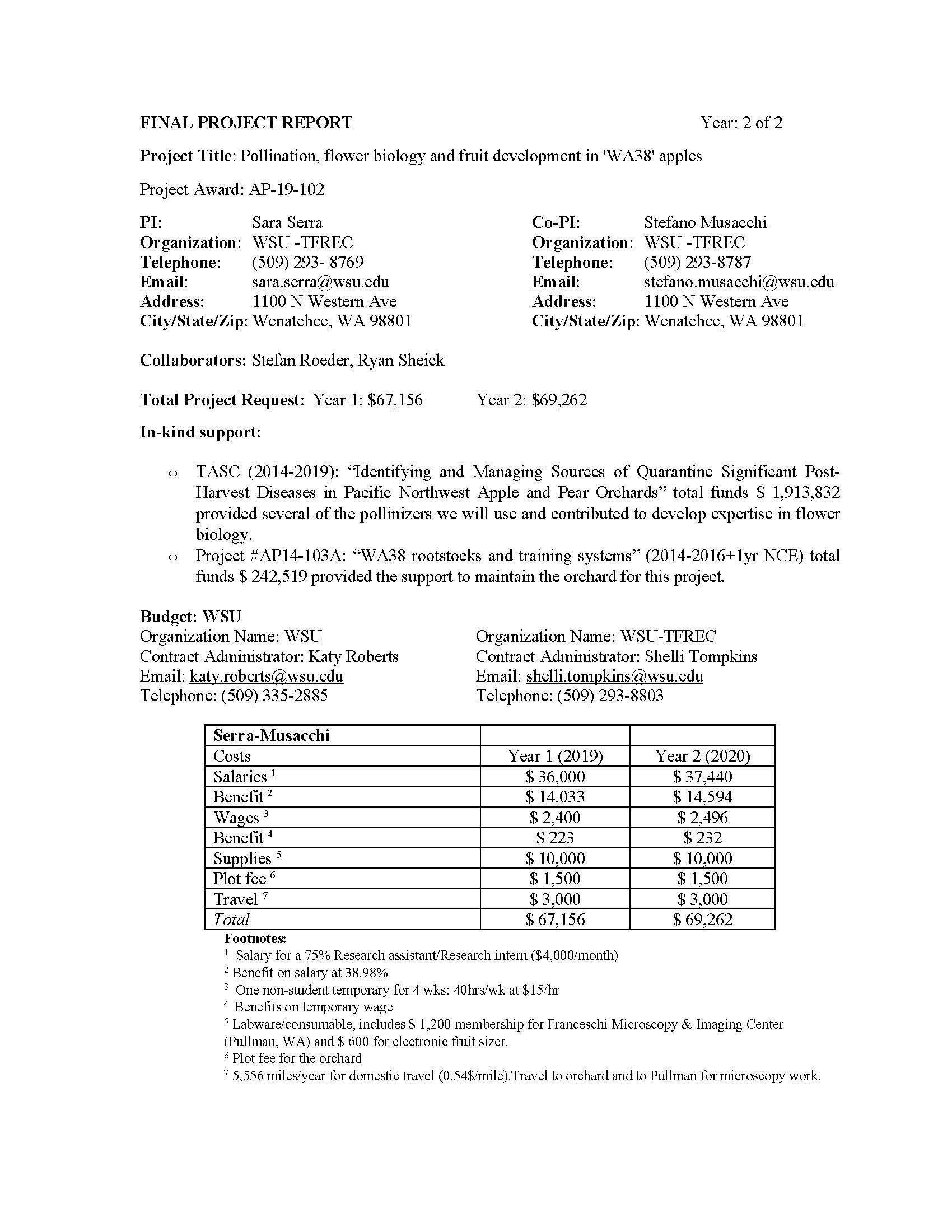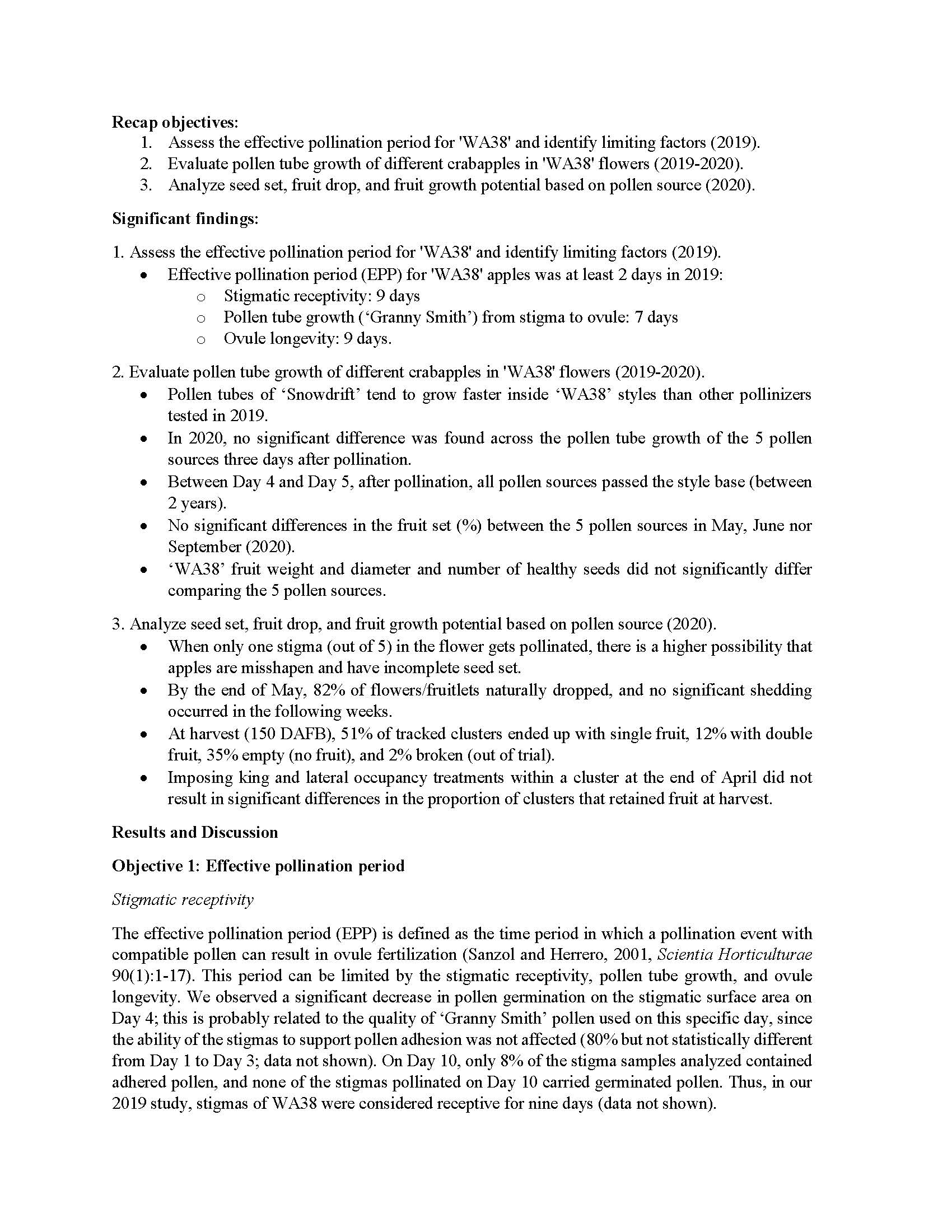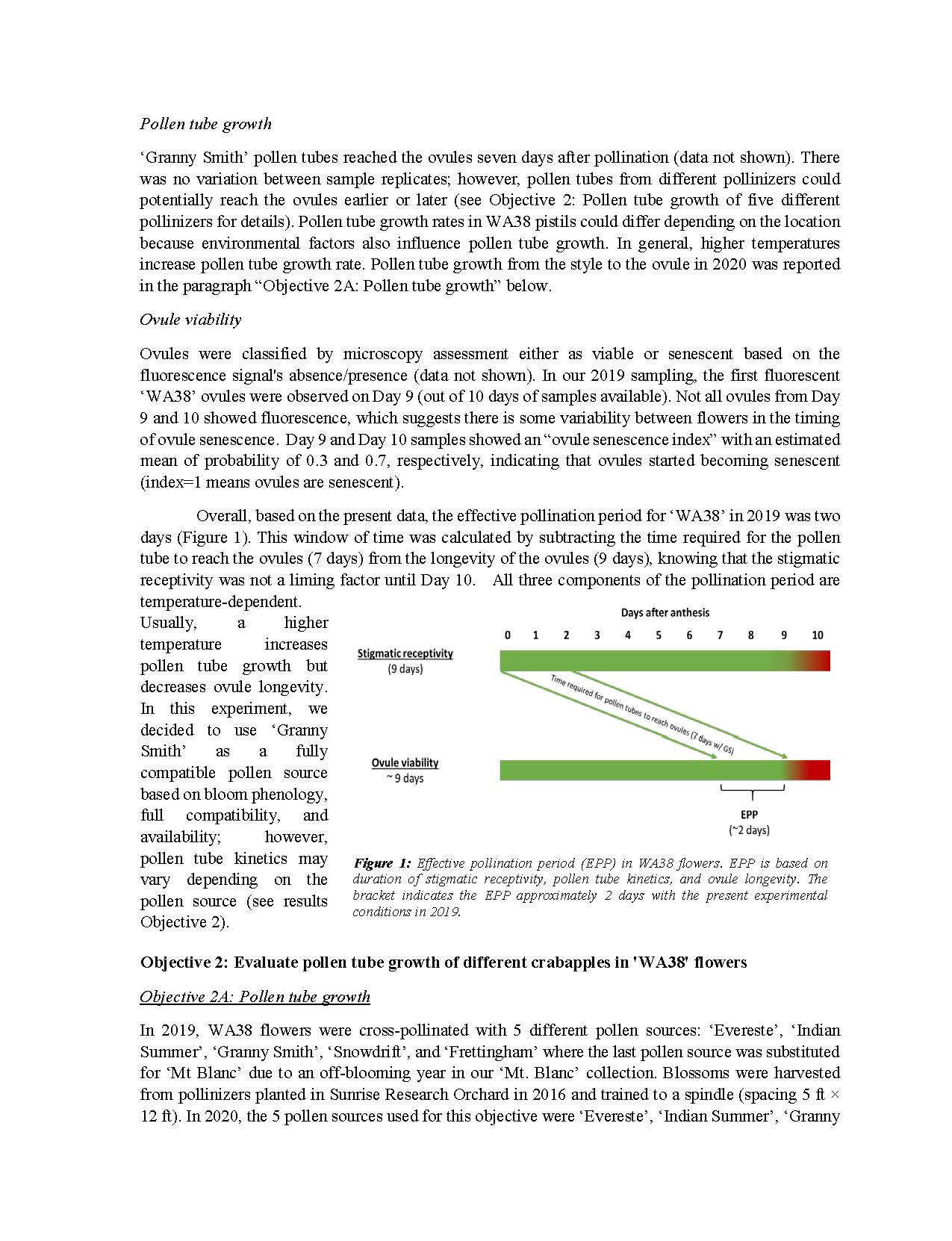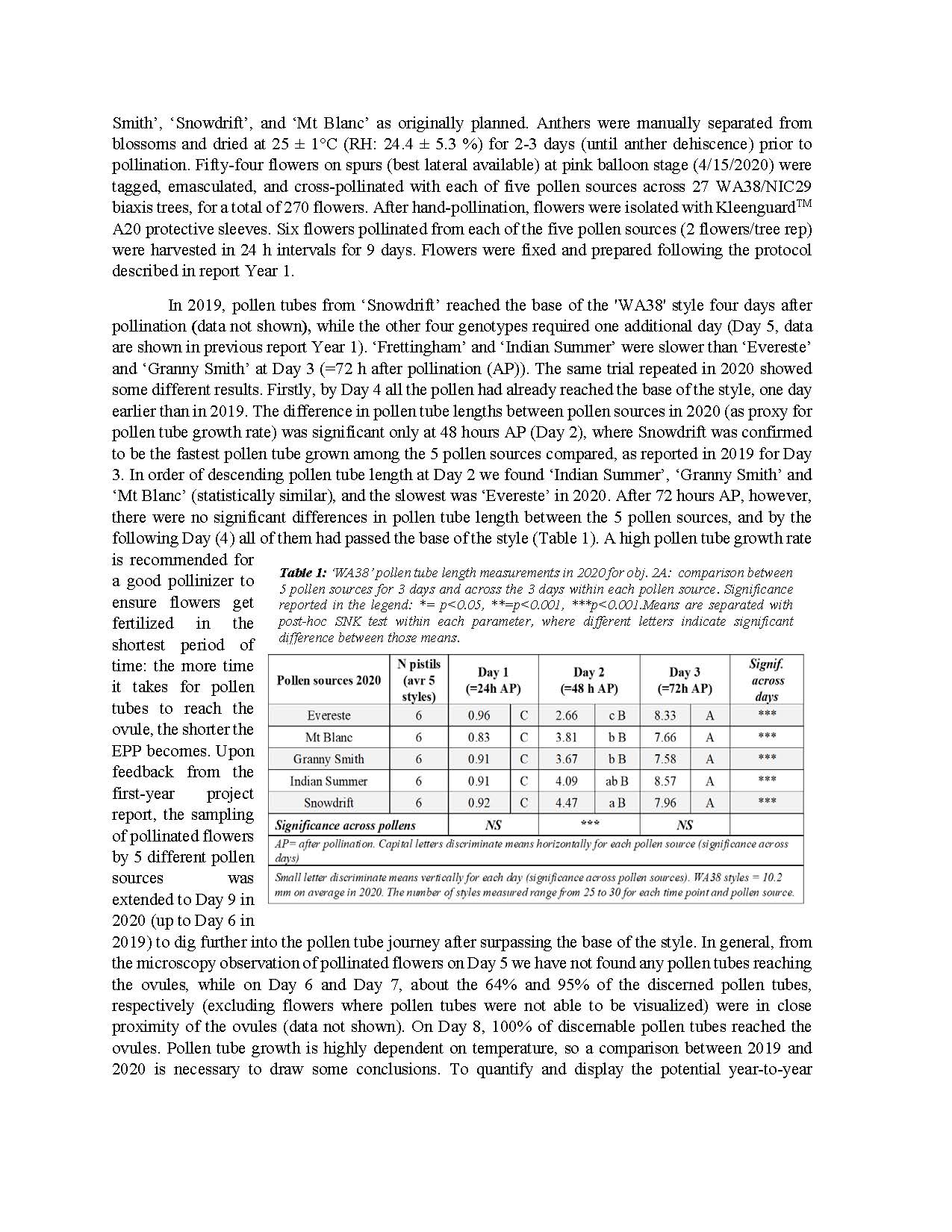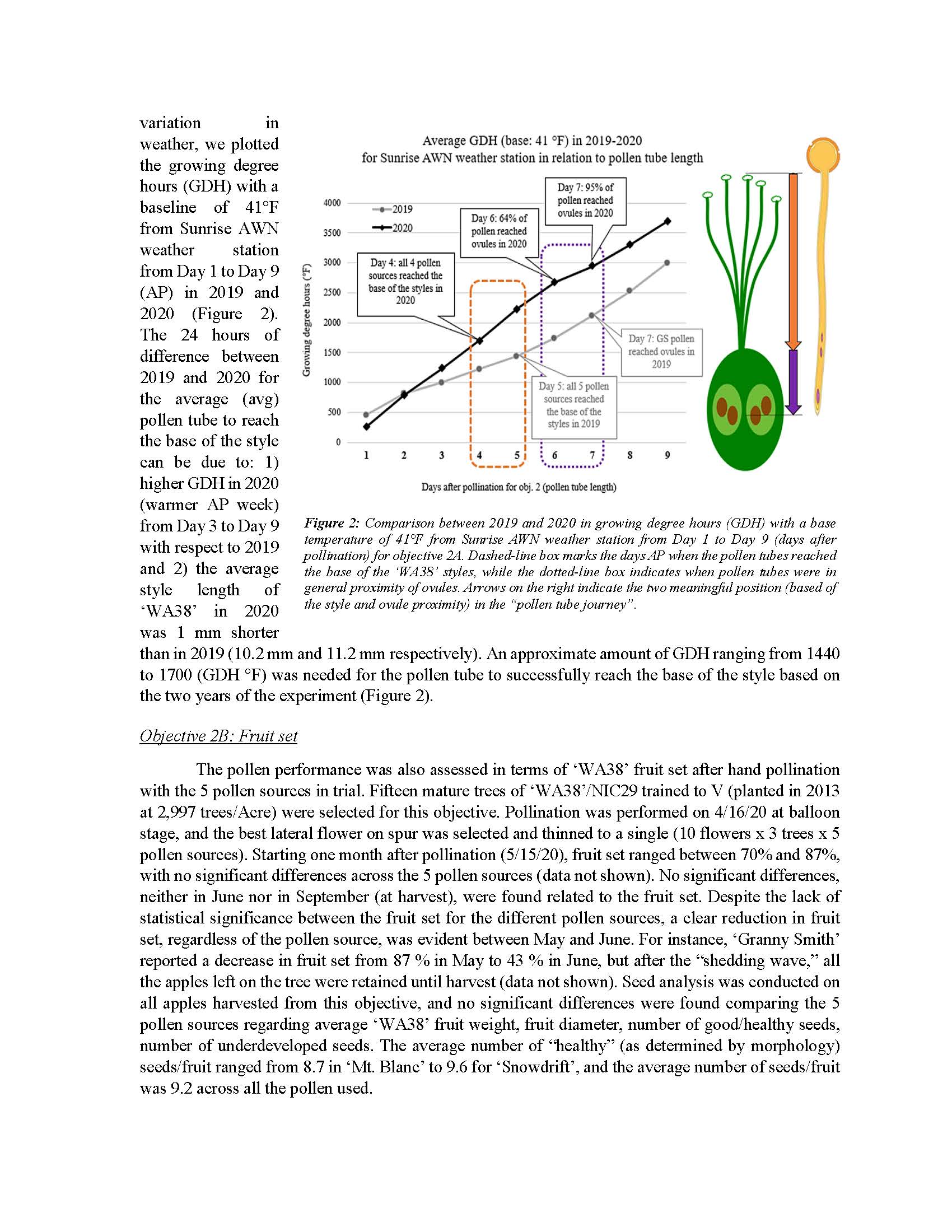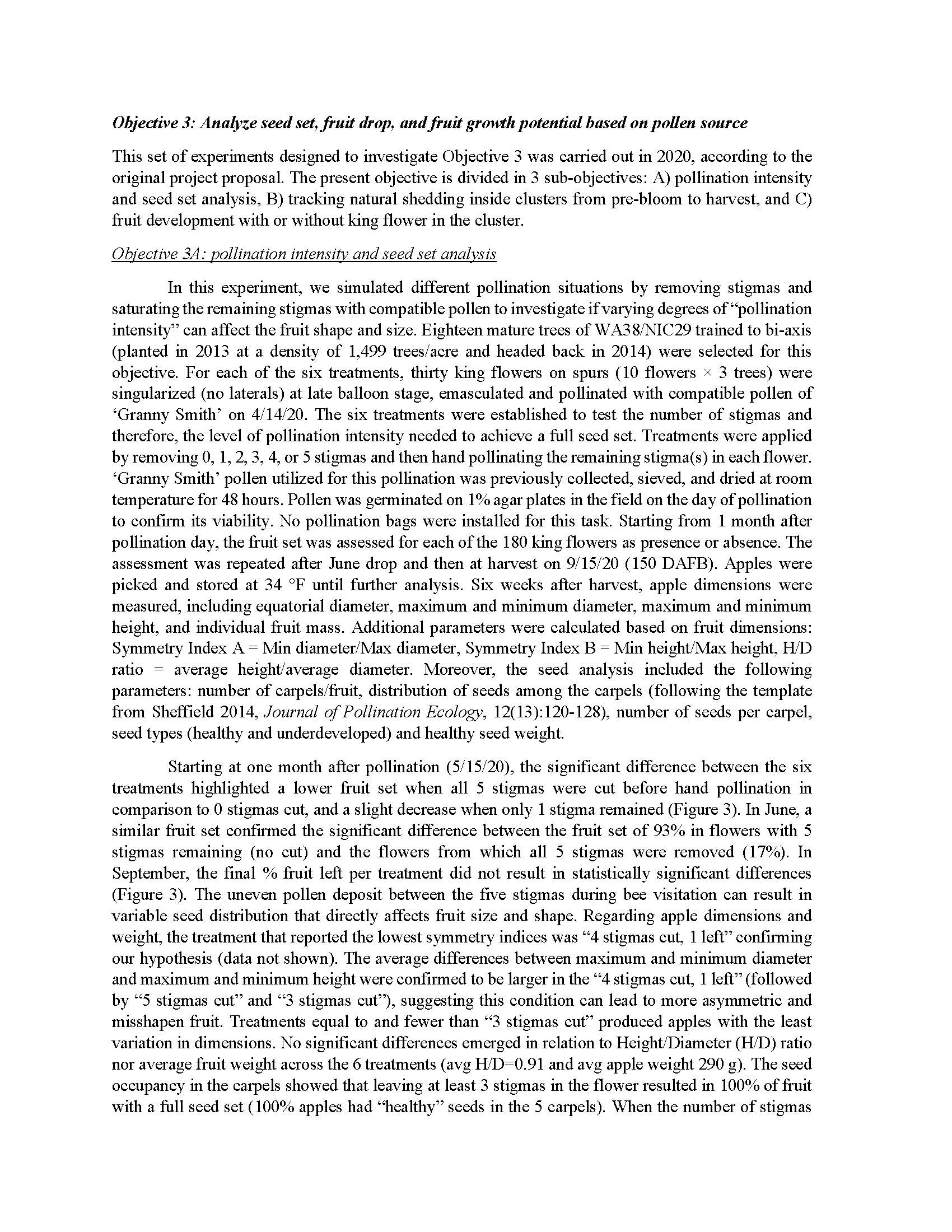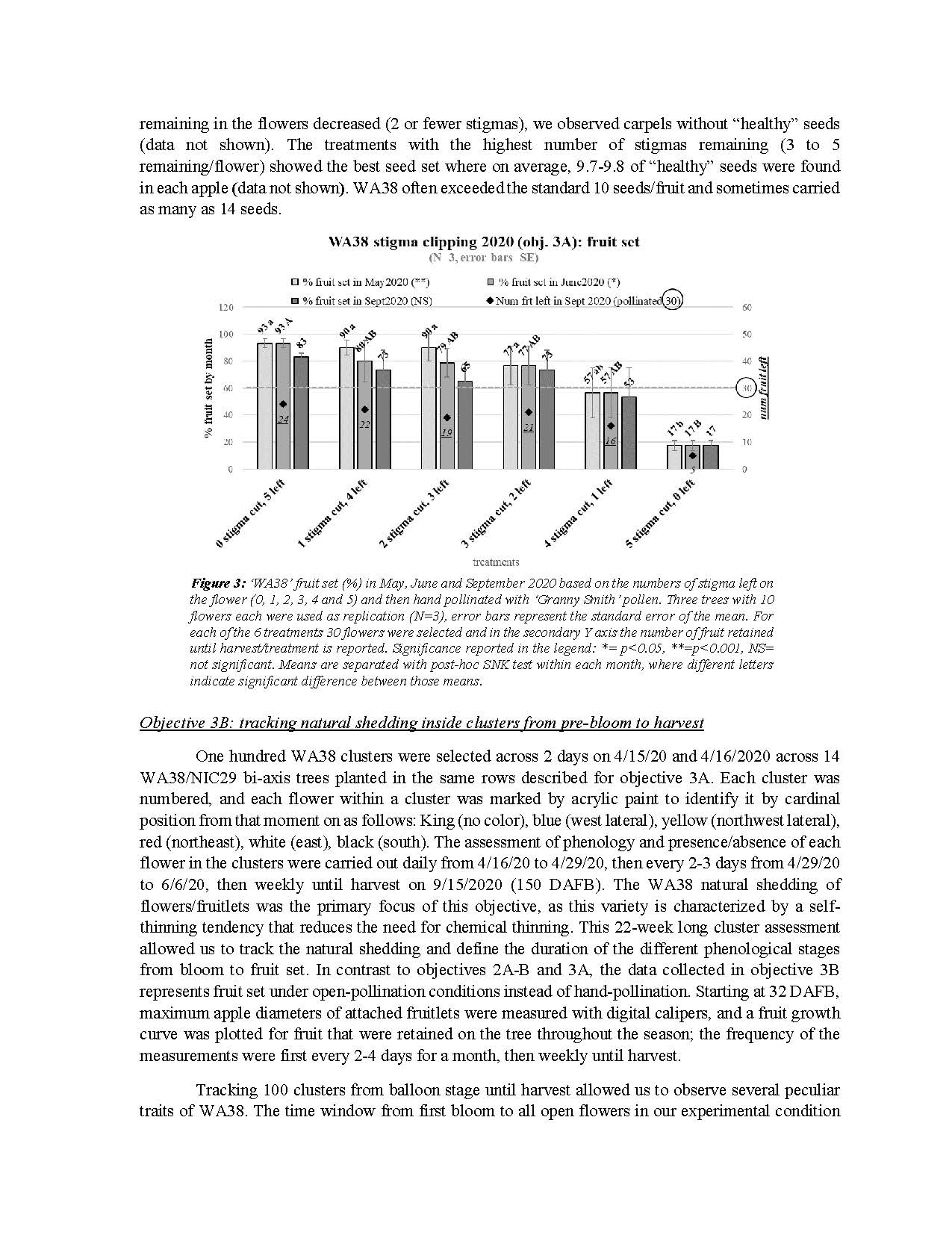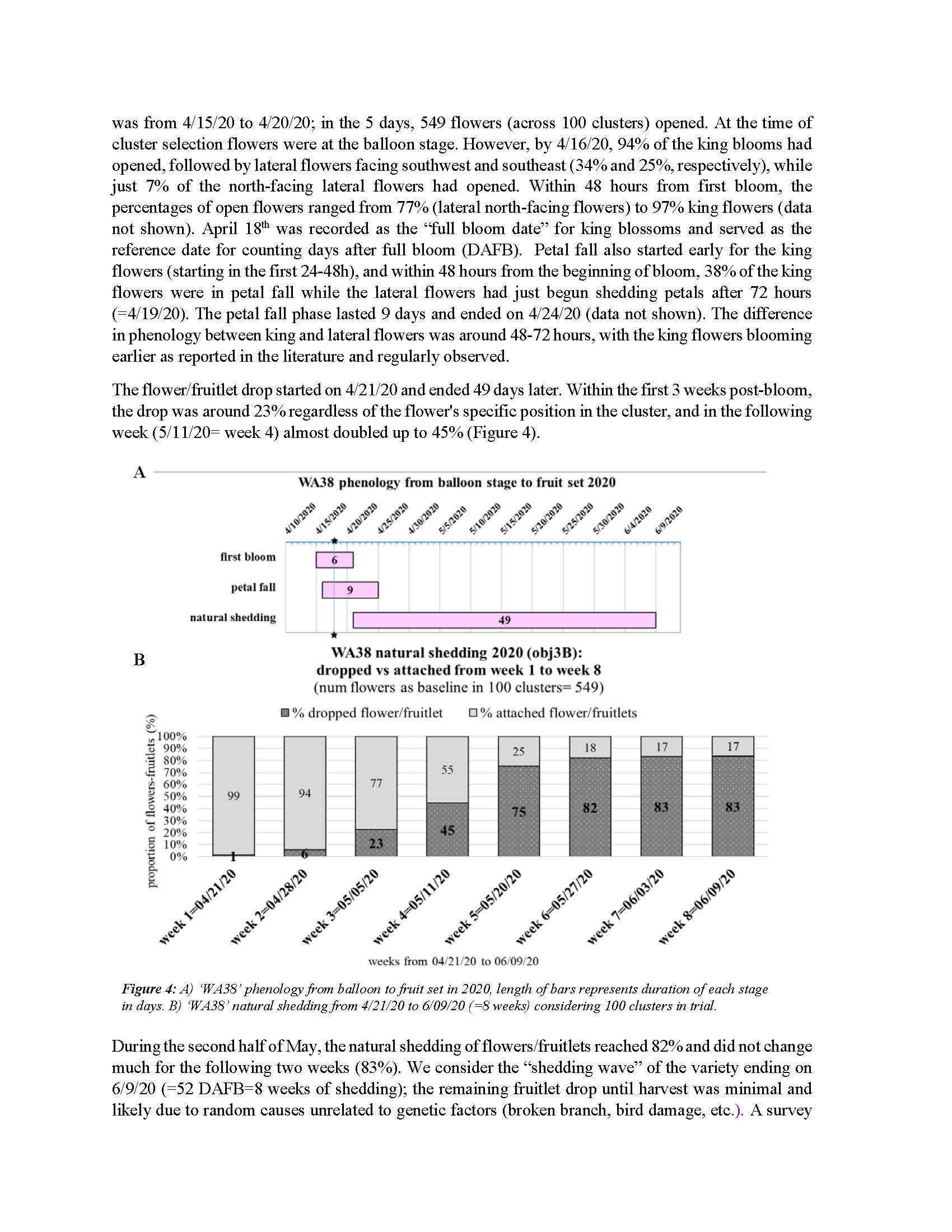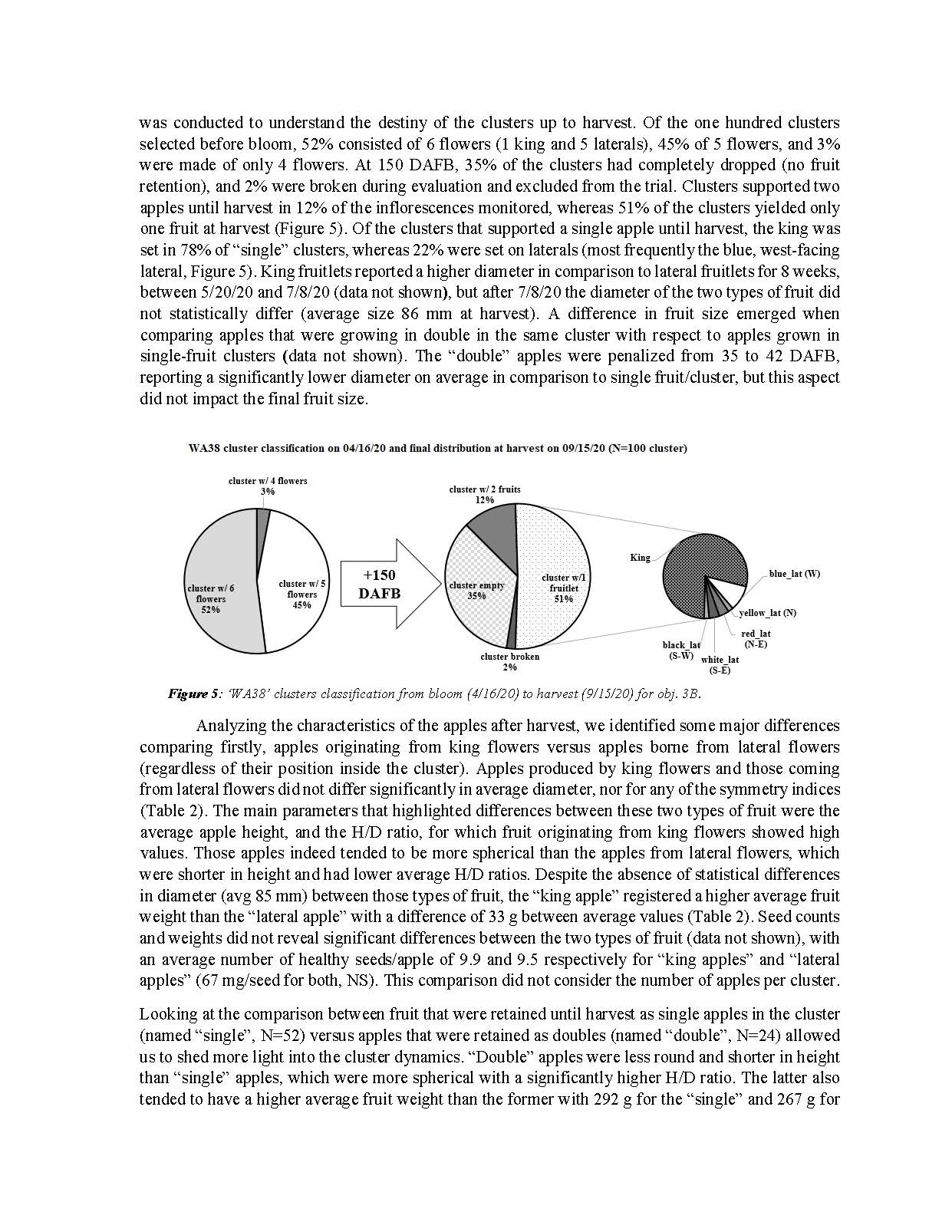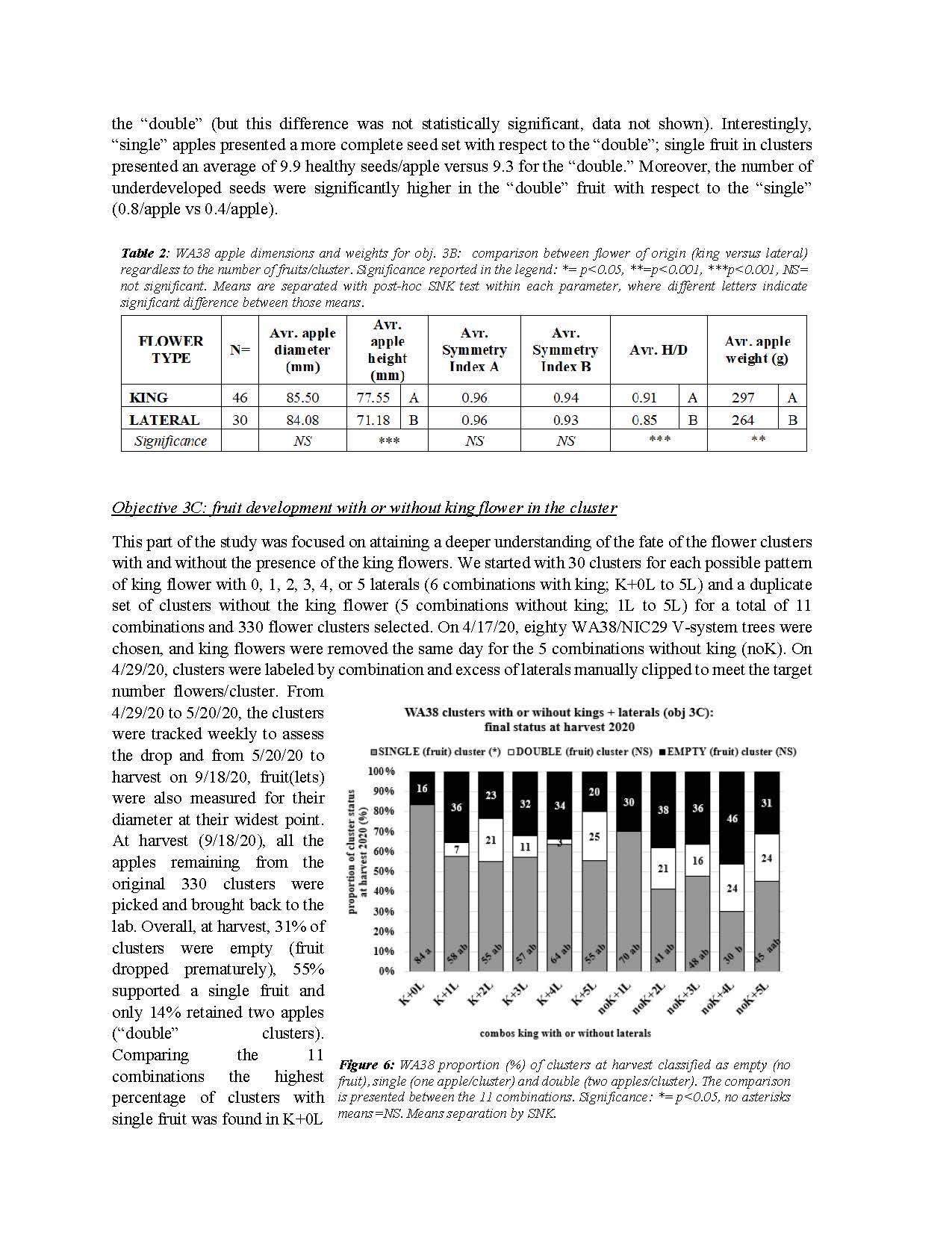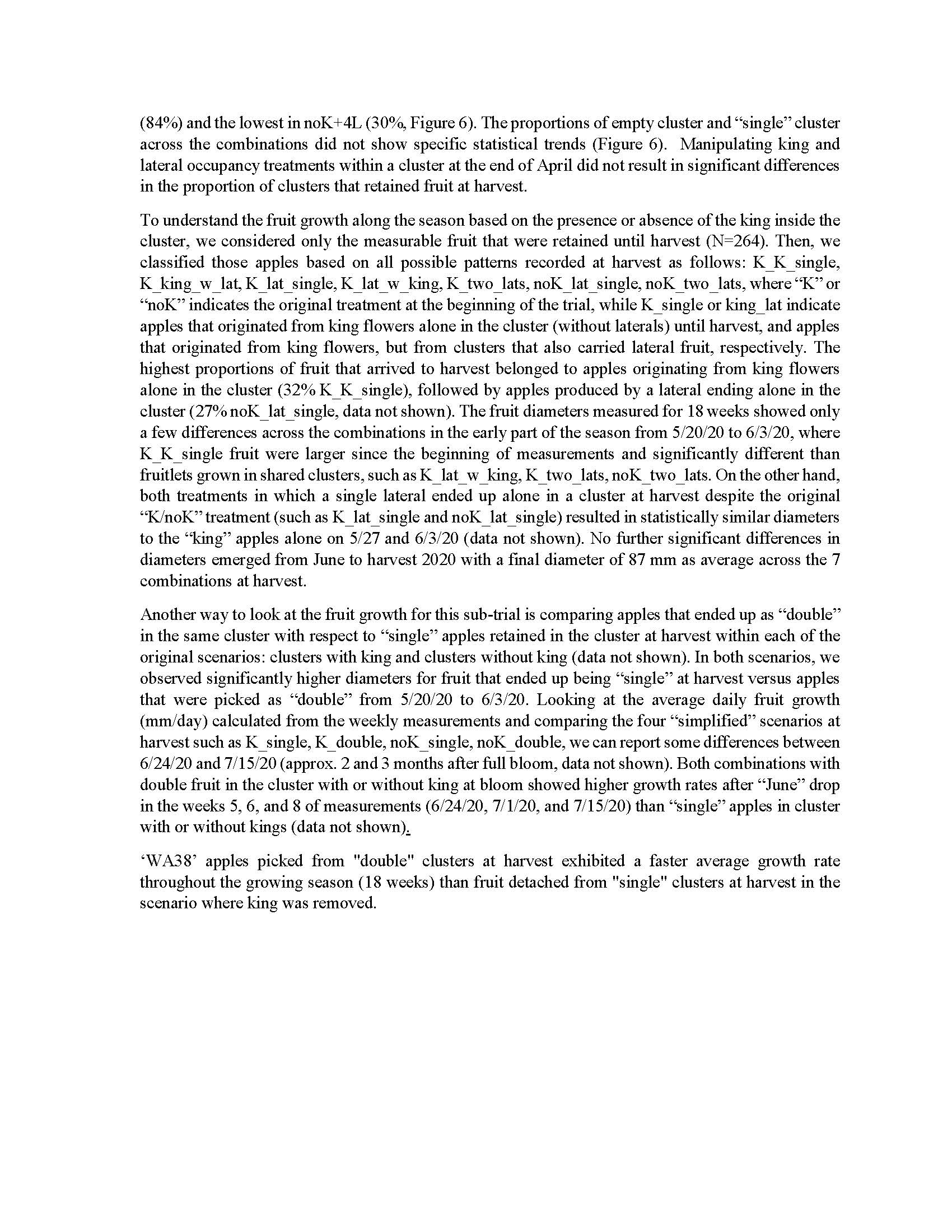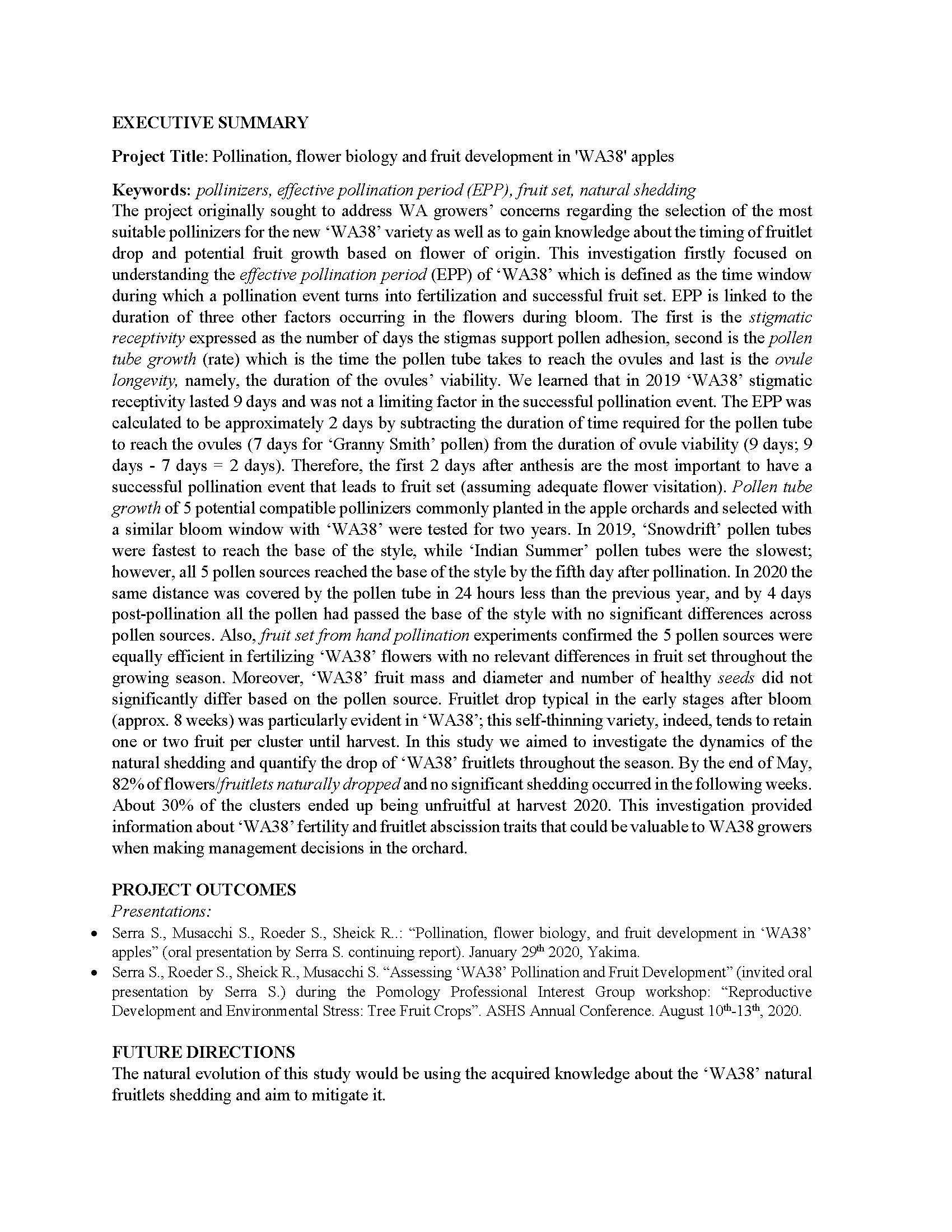Pollination, flower biology and fruit development in ‘WA38’ apples
Author: Sara Serra, Stefano Musacchi
Published: 2021
Summary: The project originally sought to address WA growers’ concerns regarding the selection of the most suitable pollinizers for the new ‘WA38’ variety as well as to gain knowledge about the timing of fruitlet drop and potential fruit growth based on flower of origin. This investigation firstly focused on understanding the effective pollination period (EPP) of ‘WA38’ which is defined as the time window during which a pollination event turns into fertilization and successful fruit set. EPP is linked to the duration of three other factors occurring in the flowers during bloom. The first is the stigmatic receptivity expressed as the number of days the stigmas support pollen adhesion, second is the pollen tube growth (rate) which is the time the pollen tube takes to reach the ovules and last is the ovule longevity, namely, the duration of the ovules’ viability. We learned that in 2019 ‘WA38’ stigmatic receptivity lasted 9 days and was not a limiting factor in the successful pollination event. The EPP was calculated to be approximately 2 days by subtracting the duration of time required for the pollen tube to reach the ovules (7 days for ‘Granny Smith’ pollen) from the duration of ovule viability (9 days; 9 days - 7 days = 2 days). Therefore, the first 2 days after anthesis are the most important to have a successful pollination event that leads to fruit set (assuming adequate flower visitation). Pollen tube growth of 5 potential compatible pollinizers commonly planted in the apple orchards and selected with a similar bloom window with ‘WA38’ were tested for two years. In 2019, ‘Snowdrift’ pollen tubes were fastest to reach the base of the style, while ‘Indian Summer’ pollen tubes were the slowest; however, all 5 pollen sources reached the base of the style by the fifth day after pollination. In 2020 the same distance was covered by the pollen tube in 24 hours less than the previous year, and by 4 days post-pollination all the pollen had passed the base of the style with no significant differences across pollen sources. Also, fruit set from hand pollination experiments confirmed the 5 pollen sources were equally efficient in fertilizing ‘WA38’ flowers with no relevant differences in fruit set throughout the growing season. Moreover, ‘WA38’ fruit mass and diameter and number of healthy seeds did not significantly differ based on the pollen source. Fruitlet drop typical in the early stages after bloom (approx. 8 weeks) was particularly evident in ‘WA38’; this self-thinning variety, indeed, tends to retain one or two fruit per cluster until harvest. In this study we aimed to investigate the dynamics of the natural shedding and quantify the drop of ‘WA38’ fruitlets throughout the season. By the end of May, 82% of flowers/fruitlets naturally dropped and no significant shedding occurred in the following weeks. About 30% of the clusters ended up being unfruitful at harvest 2020. This investigation provided information about ‘WA38’ fertility and fruitlet abscission traits that could be valuable to WA38 growers when making management decisions in the orchard.
Keywords:

